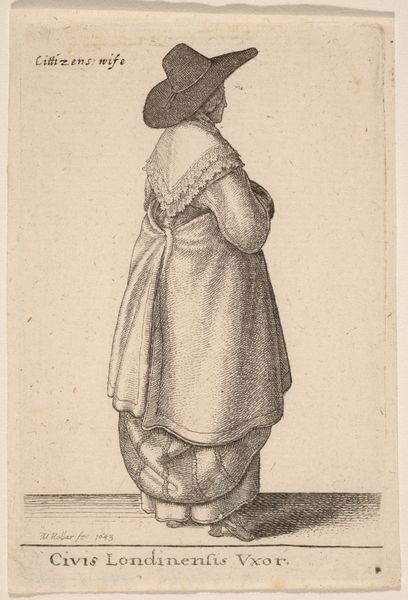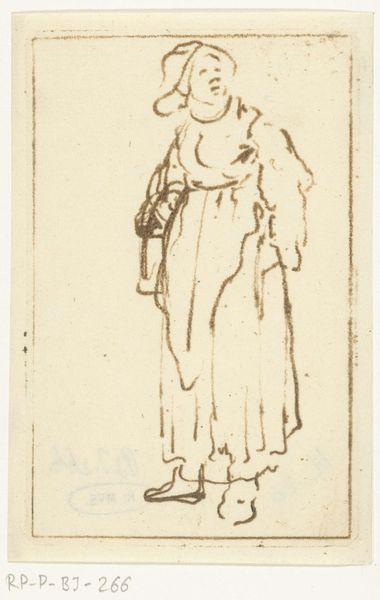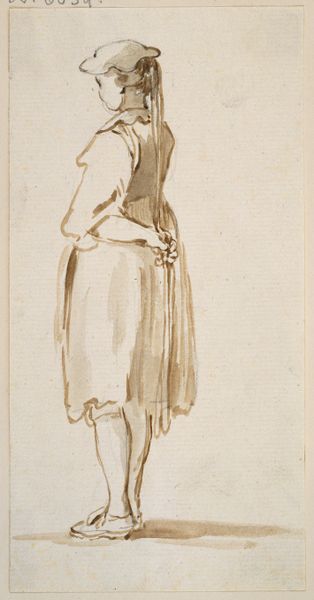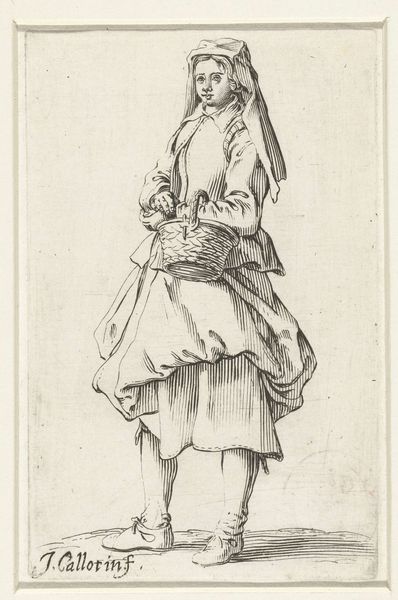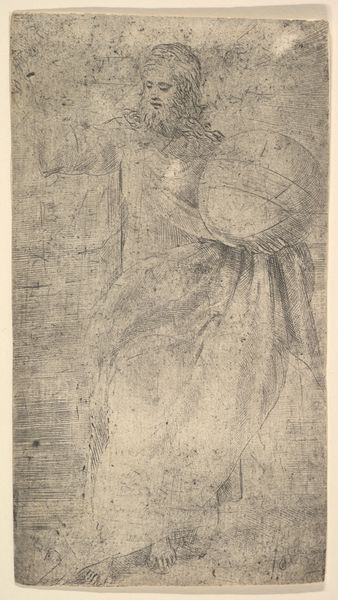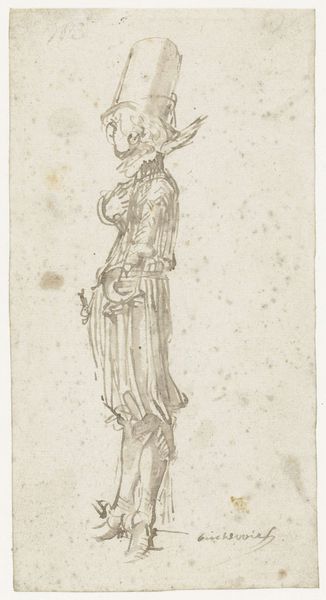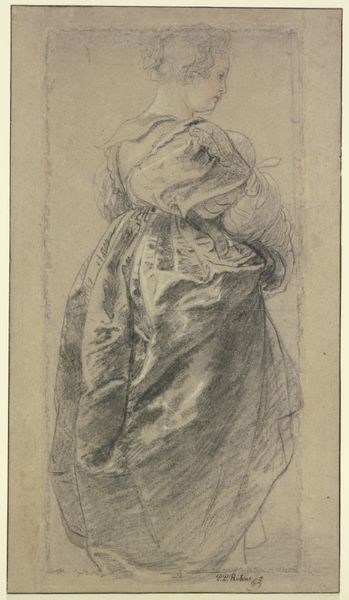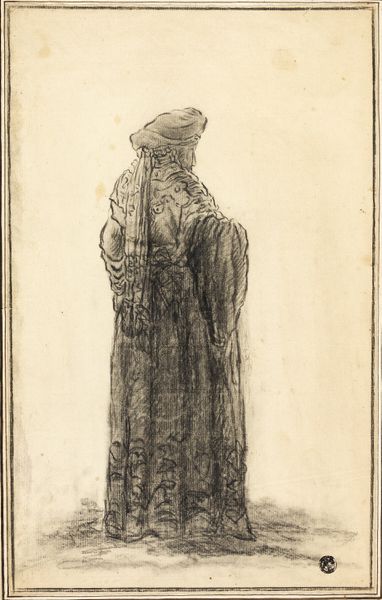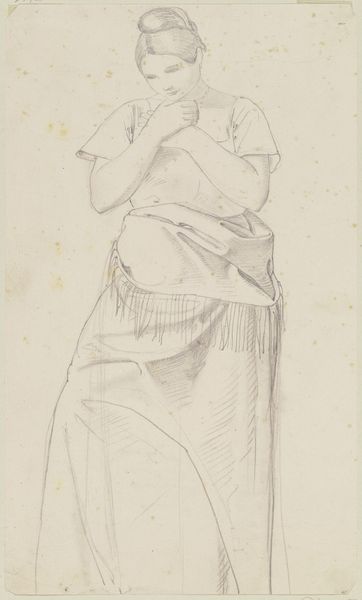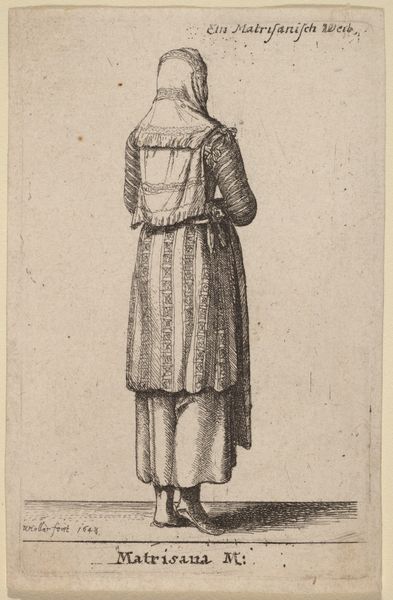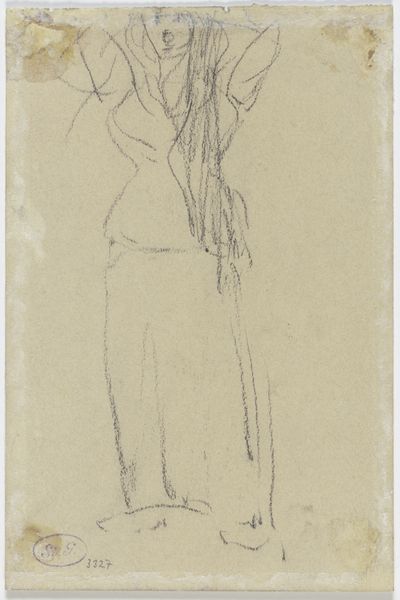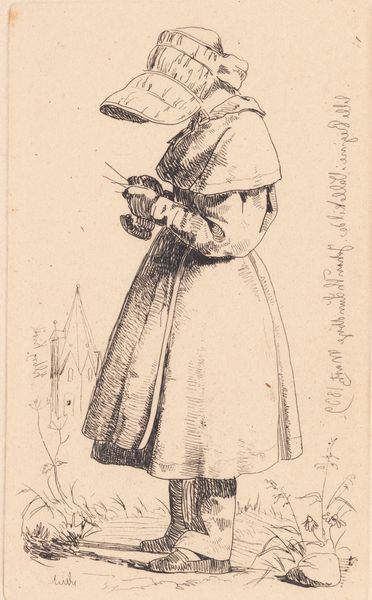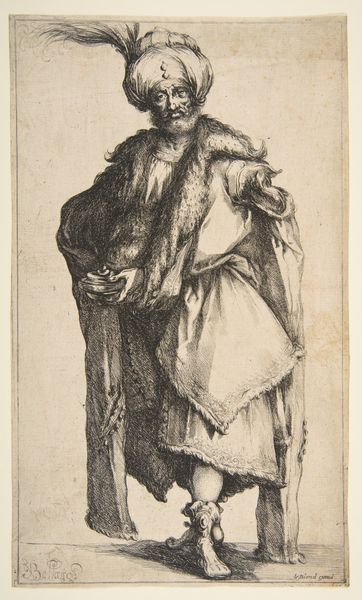
print, etching
#
portrait
# print
#
etching
#
figuration
#
realism
Dimensions: height 294 mm, width 136 mm
Copyright: Rijks Museum: Open Domain
Curator: Immediately, I'm drawn to the textures; the fur against her skin, the drape of the skirt, and the soft light on her face all work to conjure up a bygone era. Editor: Welcome, everyone. We’re looking at Johannes Löhr’s "Jonge vrouw met mof", or "Young woman with Muff" created sometime between 1892 and 1928. This is a realistic portrait executed as an etching. Curator: Etching lends a certain atmospheric quality. You can sense the layers and details—a moment captured. I’m curious about what the muff might have symbolized during that period. Editor: Muffs, fur stoles, and similar fashion items can speak volumes about class and gender roles. It might indicate the woman's bourgeois status, showing what fashions and self-presentations are available to women in this social stratum. Looking closely, it seems she is posed more formally than casually, her affect stoic yet determined. It reflects the transition of women's roles during that turn-of-the-century period. Curator: The composition reinforces that sense of controlled strength, too, doesn’t it? The artist's placement emphasizes her stance—firm, ready—hinting perhaps at subtle rebellion or a desire for more visibility within her environment. Her gaze certainly doesn't betray any timidity. Editor: Visually, the contrast between the solid areas and more faintly etched passages carries meaning as well. Consider the solid darks around her fur boa compared with the more spare rendering of her lower skirt, emphasizing her torso as an almost masculine block. Löhr masterfully employed shadowing. She's in vogue, yet somehow out of time—perhaps echoing some archetypal goddess figure hiding beneath contemporary garb. Curator: A figure caught at a critical moment. I keep returning to her gaze and wonder what she anticipates in an era that promised new opportunities, especially for women seeking social equality. It reminds me we stand on the shoulders of all that has gone before. Editor: For me, this piece serves as an example of our collective, continuous experience. Despite cultural and historical changes, some needs and longings remain the same.
Comments
No comments
Be the first to comment and join the conversation on the ultimate creative platform.
